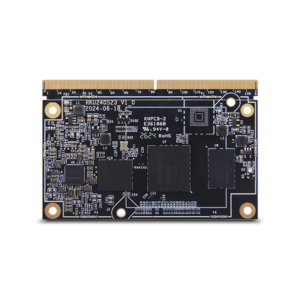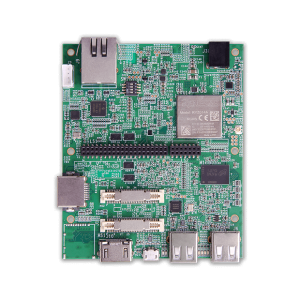Accelerating Product Development with Versatile Computer-on-Modules
Accelerating Product Development with Versatile Computer-on-Modules
Blog Article
Maximizing Efficiency in Embedded Systems with Computer-on-Modules
In the current fast-paced scientific landscape, companies and developers are increasingly looking at modular alternatives to meet up the ever-growing requirements of high-performance applications. One particular option getting grip is the utilization of computer on module. These lightweight, self-contained techniques are loaded with all the current important aspects of a computer, like the model, memory, storage, and connectivity interfaces, all incorporated into a single unit. In this information, we discover why Computer-on-Modules are being a go-to selection for scalable, high-performance programs across numerous industries.

1. Lightweight Design and Integration
One of many principal advantages of COMs is their compact sort factor. These modules are created to include all critical components of a computer, reducing the requirement for multiple distinct parts and which makes it easier to generate lightweight, space-efficient systems. This integration permits designers to construct powerful alternatives without compromising the overall measurement of the conclusion solution, which is very helpful in industries such as stuck methods, IoT devices, and industrial automation.
2. Scalability for Varied Applications
Scalability is a crucial element for contemporary programs, particularly in sectors like telecommunications, automotive, and edge computing. With Computer-on-Modules, firms can simply range up or down with respect to the particular efficiency and reference requirements of these projects. For example, an organization developing a benefit processing answer can start with an element that meets standard wants and then upgrade to better segments since the workload or running requirements grow. This flexibility enables companies to future-proof their opportunities and arrange electronics with changing performance demands.
3. High-Performance Processing
Several high-performance purposes need a strong computational backbone to take care of demanding tasks such as for instance real-time knowledge handling, movie analytics, or machine learning. COMs are normally developed with effective processors, high-speed interfaces, and sufficient storage, making them effective at providing the high throughput and low-latency efficiency needed for these applications. More over, their power to support the newest model architectures ensures that programs may keep at the forefront of efficiency benchmarks.
4. Cost Performance and Time Savings
Still another significant advantage of using Computer-on-Modules is cost efficiency. Because the segments come pre-integrated with important parts, developers save your self both time and methods that could usually be used on developing, screening, and building individual components. This may cause reduced development cycles and a quicker time-to-market for products, which will be critical in aggressive industries. Also, considering that the equipment components are standardized, the chance of incompatibility is decreased, ultimately causing smoother development techniques and decrease executive costs.
5. Flexible Customization
While COMs give you a high degree of integration, they're also designed for flexibility. Several COMs come with different choices for I/O interfaces, memory configurations, and energy administration answers, letting developers to custom the module to the particular needs of these application. That versatility is specially valuable in industries where customization is key, such as medical devices, robotics, and automotive applications.

Conclusion
In conclusion, Computer-on-Modules present numerous advantages for businesses and designers looking to produce scalable, high-performance solutions. Their compact design, scalability, strong processing functions, cost-efficiency, and modification options cause them to become a perfect selection for a wide variety of applications. As industries continue steadily to evolve and demand more powerful, variable answers, COMs may certainly enjoy a pivotal position in surrounding the continuing future of technology. Report this page